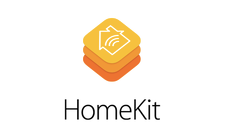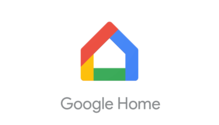
Privacy is a hot topic among the leading smart home players at the moment. And rightly so.
The big three
The big three, Amazon Alexa, Google Assistant, and Apple HomeKit, are pivoting their view on privacy in a smart home since the market has been showing bigger and bigger resistance to data gathering. The best way to sum up the recent shift is to quote Apple’s Senior Vice President of Engineering:
“New APIs bring cameras and doorbells to HomeKit for the first time, but with a key difference. The upcoming Arlo, Eufy, Logitech and Netatmo devices will hand off video to your HomeKit hub (Apple TV, iPad, HomePod) to process locally, before they’re encrypted and sent to iCloud for 10 days of free storage. Most home cameras today send people’s video up to the cloud so it can be analysed. Unfortunately, this risks your privacy, but we have a new way. HomeKit has been designed from the outset to protect privacy and security in your home accessories.”
The above is extremely important as it clearly demonstrates that the three players won’t just present some pretty updates to kill the topic, but challenge each other in how they’re really taking care of your data. This is how privacy officially became the no. 1 priority when customers think about smart devices.
Now let’s look at the next steps each smart home player is taking to guarantee this:
Apple HomeKit

Apple has put much more thought into privacy than other players have. And it shows. While this, of course, has a lot to do with their high-end user base - Apple’s complete infrastructure is set to process much more data locally than in cloud in comparison to Google and Amazon. Apple HomeKit as the heart of the Apple smart home play - actually runs almost 100% locally.
But with the recent flags from the market customers started asking for more control over their privacy. This has sparked the recent development on how those platforms view and let you control your privacy.
Apple launched HomeKit Secure Video in November 2019 starting with Logitech Circle 2 cameras. HomeKit Secure is a great move for Apple, although if you’re used to cutting edge features of modern security cameras then you might have to wait to gain the same level of functionality in a secure way.
HomeKit Secure Video cameras can be set to record clips and stream video, only stream, or turn each camera off individually. You can also assign different modes when people are home or away. There are still some UX flaws in terms of turning the camera on and off but there is a simple way to connect it with a HomeKit supported plug and control it over your HomeKit app.
This is expected to change in the future making control over your cameras available via Siri voice control, HomeKit app, scenes, automation, shortcuts etc.
In terms of controlling camera resolution and perspective there is one surprising thing: once you switch to Apple’s new Secure Video feature you can no longer access the Circle 2 camera via the Logitech app.
For example, Logitech included toggles for setting the Circle 2 camera to capture video in 720p HD or 1080p Full HD. The lower resolution option was ideal for improving performance on slower networks, but Apple’s Home app defaults the cameras to 1080p with no toggle.
Apple hasn’t included one of the most standard home security camera features nowadays - motion zones.
Motion zones let you draw an area around the field of view so you can choose for your camera to monitor just windows and not the carpet on the floor where your pet is regularly present.
Reviewing clips could be easier
While checking your clips is usable it could be improved, especially navigation within each video. One of the best features of the Logitech Circle 2 app is to view a timelapse of the last day which is not available with HomeKit Video Secure.
There is only one big screen for viewing videos and it’s not supported by Secure Video yet - Apple TV.
You can watch your camera recordings within the HomeKit app on iPhone, iPad, iPod Touch and iMac but not on the most obvious and biggest screen, your TV via Apple TV, however this is expected to change soon.
All in all - HomeKit Secure Video is a small step for Apple but a major leap for mankind. Especially for KNX and Loxone smart home owners that will now be able to choose from a variety of cameras and intercoms that can be securely controlled via a single mobile app. Taking limited availability and compatibility into account with KNX and Loxone, we expect that users are about to have a much wider and price friendly pool of options to choose from.
Source: https://9to5mac.com/2019/11/19/homekit-secure-video-missing-features/
Amazon Alexa

With Apple definitely rolling the ball on the privacy issue, Amazon was forced to respond and protect their market leading position that was having more than 100.000 devices already supported by Alexa. Amazon’s Hardware Chief David Limp had a strong opinion on privacy shortly before CES 2020 stating this:
“Every time that privacy comes up, I think it's our responsibility to continue to move the ball forward. We're never going to stop. As long as we think it's important and we hear from customers, we're going to continue inventing new ways to make these products, obviously more delightful, but also just more secure across the board.”
Given Amazon's commitment to user-centric product development we can be optimistic about what the future holds. At the end, we, the consumers, are setting their product roadmap priorities with our wallets!
The first steps on upgrading privacy have already been presented at Amazon's event back in September when Limp demonstrated how seriously Amazon is taking privacy, unveiling a host of new features that give consumers more control over Alexa privacy settings. Those features include auto-deleting recordings, preventing Alexa from waking at unintended times and more privacy controls for Ring home security cameras.
Along with the auto-delete feature, Limp also introduced the ability for customers to better understand what Alexa is recording and why it behaves a certain way. Customers can now say to their Echo speakers “Alexa, tell me what you’ve heard?” and “Alexa, why did you do that?”. Amazon also created a new Alexa Communications for Kids to let parents pick which contacts their kids are allowed to talk to on the Echo Dot Kids Edition.
Those are some serious steps in the right direction but there is also something we have to understand about this technology:
Analyzing recordings is crucial for optimizing voice recognition performance and the industry is definitely aligned on that. The monitoring is necessary for development and only a small portion of recordings are reviewed manually. The majority of the market understands that as well but people are calling for Amazon to offer more transparency around the process.
With this in mind, the real updates are Amazon presenting the ability for customers to opt-out of human reviews if they wish. Hand in hand they have presented the Alexa Privacy Hub on their website where they let users erase their recordings each day by saying: “Alexa, delete everything I said today”.
Those are similar to the updates people expect, but not entirely so.
While having the ability to ask Alexa what it heard and why did it do something is okay - having total control over how your data is collected and processed is what customers are really after.
The ability to delete recordings and opt-out of human reviews are two major steps in the right direction.
Source: https://www.cnet.com/news/amazon-bolsters-alexa-privacy-after-user-trust-takes-a-hit/
Google Home

Like Apple and Amazon, Google presented various additions to the way it handles privacy. Especially with the control you have over deleting recordings, as you can now delete anything you have said simply by saying: “Hey Google, that wasn’t for you” for each time you’ve said something that you don’t want saved.
This is a powerful feature as it allows you to tailor the data you are sending to Google at least in some way.
Next to the power of deleting single commands, users can also ask “Hey Google, are you saving my audio data?” Similar as with Alexa, this command takes you directly to the privacy settings screen where you can change your preferences around collecting data as well as delete complete voice assistant activity from your Google account by saying: “Hey Google, delete everything I said to you this week”.
These new privacy features were released not long after Google updated their privacy policy last year - making it default for the voice assistant to not retain audio recordings once this request is fulfilled, meaning that users have to opt-in to let Google keep any voice recordings made by the device. Users can also review and delete past audio recordings.
In comparison to Amazon and Apple who are making serious steps in not keeping your data at all - Google’s update seems more esthetical than anything else, so the response from the heart of the tech community was more or less mocking out of Google’s PR.
But anyhow, some companies have an easier job in achieving what we want than others (given their starting infrastructure) and the sole point of privacy being the main topic at the start of the year is that things are finally moving in the right direction.
Learn more about how to increase privacy and fortify your home without an alarm HERE.
Long story short - the assistants have never been more in-line with the privacy & security of KNX & Loxone smart homes and we can expect it will only get better.
